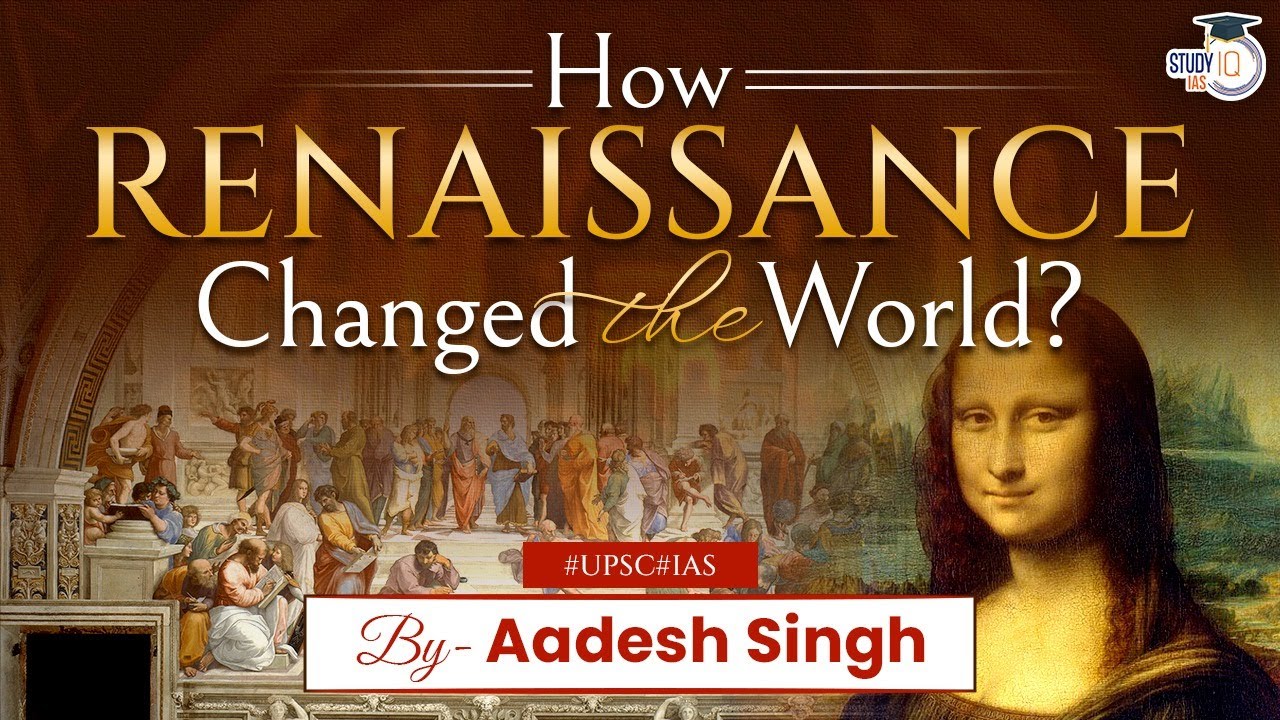Everything You Need To Know About The Renaissance | That Art History Girl
Summary
TLDRThis lecture introduces the Renaissance, a transformative period in European history characterized by a revival of classical art, learning, and humanism. Originating in Italy, it emphasized human potential and creativity, with influential figures like Leonardo da Vinci, Michelangelo, and Raphael redefining art through naturalism and perspective. Key works such as the Mona Lisa and The Last Supper showcase this evolution. The Renaissance also marked advancements in science and exploration, supported by wealthy patrons like the Medici family. Though it declined with the fall of Rome in 1527, its impact continued in Northern Italy and beyond, influencing art and thought for centuries.
Takeaways
- 😀 The Renaissance, meaning 'rebirth,' marked a revival of classical art, learning, and wisdom in Europe.
- 😀 This period saw significant contributions to art, architecture, science, and political ideas following the Middle Ages.
- 😀 Humanism emerged as a key philosophy, emphasizing human potential and achievements, affecting education and society.
- 😀 Italy, particularly Florence and Venice, became the epicenter of Renaissance art and scholarship due to wealth from trade.
- 😀 The fall of Constantinople in 1453 led to an influx of Eastern scholars into Italy, boosting humanist thought.
- 😀 Major artists of the Renaissance included Leonardo da Vinci, Michelangelo, and Raphael, each contributing uniquely to art.
- 😀 Da Vinci is known as a 'Renaissance Man' for his diverse studies and masterpieces like the 'Mona Lisa' and 'The Last Supper.'
- 😀 Michelangelo's works, including the 'David' and the Sistine Chapel, exemplified technical skill and expressive power.
- 😀 Raphael's 'School of Athens' showcased classical harmony, contrasting with the complex emotions in Michelangelo's works.
- 😀 The Renaissance influenced future artistic movements and continued to resonate through Northern Italy and Europe despite challenges.
Q & A
What does the term 'Renaissance' mean, and what period does it refer to?
-The term 'Renaissance' is a French word meaning 'rebirth' and refers to a period in European civilization marked by a revival of classical art, learning, and wisdom, spanning roughly from the 14th to the 17th centuries.
What were some key developments during the Renaissance?
-Key developments during the Renaissance included the decline of the feudal system, the growth of commerce, advancements in scientific inquiry, the invention of the printing press, and new technologies such as the mariner's compass and gunpowder.
What is humanism, and how did it influence Renaissance thought?
-Humanism was an educational and philosophical movement that emphasized the capabilities and achievements of human beings, focusing on the study of classical texts. It inspired a shift from religious orthodoxy to a confidence in human thought and creativity.
How did the fall of Constantinople in 1453 impact humanism?
-The fall of Constantinople led to an influx of Eastern scholars into Italy, bringing with them valuable manuscripts and Greek scholarship, which significantly boosted the humanist movement and the revival of classical learning.
Who were some major artists of the Renaissance, and what contributions did they make?
-Major artists included Leonardo da Vinci, Michelangelo, and Raphael. Da Vinci is known for works like the 'Mona Lisa' and 'The Last Supper'; Michelangelo for the 'David' and the Sistine Chapel ceiling; and Raphael for the 'School of Athens,' each contributing to the evolution of art during the period.
What role did the Medici family play in Renaissance art?
-The Medici family were prominent patrons of the arts, commissioning numerous works and supporting artists in Florence, which helped to establish the city as the center of Renaissance art.
What distinguishes High Renaissance art from earlier Renaissance styles?
-High Renaissance art is characterized by greater complexity, harmony, and a focus on the human form, with a balanced composition and an emphasis on classical ideals, distinguishing it from the earlier, more decorative styles of the proto-Renaissance.
What is the significance of Leonardo da Vinci's painting 'The Last Supper'?
-Leonardo's 'The Last Supper' is significant for its complex depiction of emotions, where each disciple's reaction to Jesus' announcement of betrayal reflects their individual personalities, showcasing a revolutionary approach to storytelling in art.
How did Michelangelo's works reflect his understanding of human anatomy?
-Michelangelo's sculptures, particularly the 'David,' demonstrate his profound understanding of human anatomy, bending the rules of proportion to enhance expressive power, while his painting in the Sistine Chapel integrates anatomical precision with grand themes.
What led to the decline of the Renaissance, and how did its spirit continue afterward?
-The decline of the Renaissance was marked by the fall of Rome in 1527, which led to a shift in artistic focus. However, the spirit of the Renaissance continued in Northern Italy and beyond, influencing artists like Titian, who celebrated classical themes.
Outlines

This section is available to paid users only. Please upgrade to access this part.
Upgrade NowMindmap

This section is available to paid users only. Please upgrade to access this part.
Upgrade NowKeywords

This section is available to paid users only. Please upgrade to access this part.
Upgrade NowHighlights

This section is available to paid users only. Please upgrade to access this part.
Upgrade NowTranscripts

This section is available to paid users only. Please upgrade to access this part.
Upgrade Now5.0 / 5 (0 votes)





